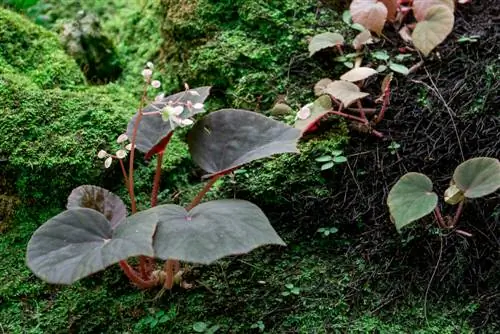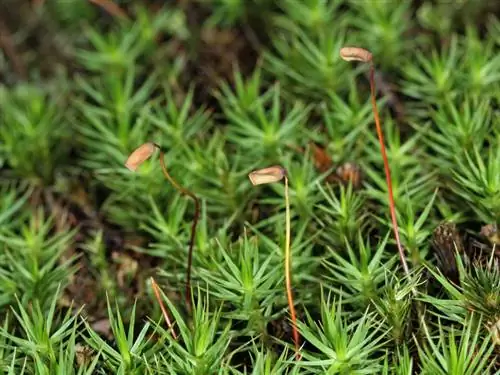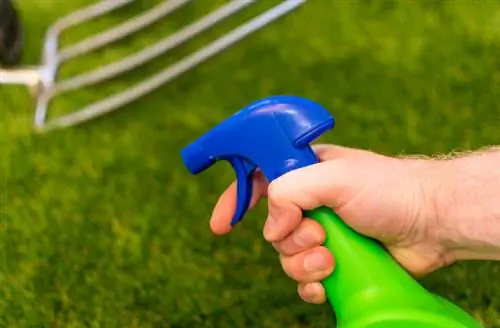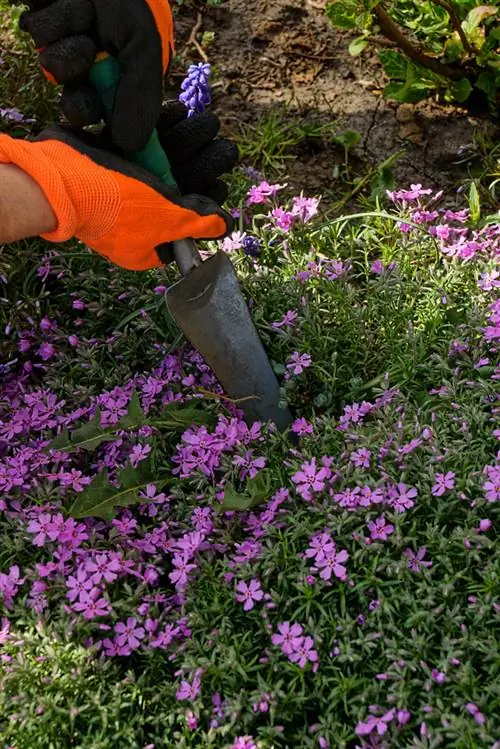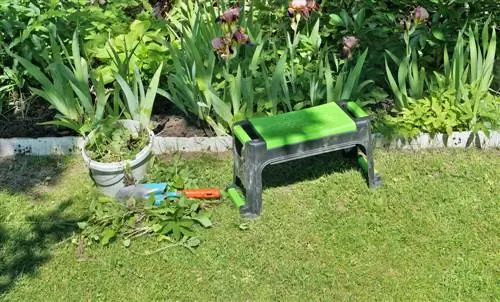- Author admin [email protected].
- Public 2023-12-16 16:46.
- Last modified 2025-01-23 11:21.
Moss is a thorn in the side of many garden owners. But the organisms have a very special way of life and can also be useful in the bed. Preventive measures or alternative use protect the living space in the bed.
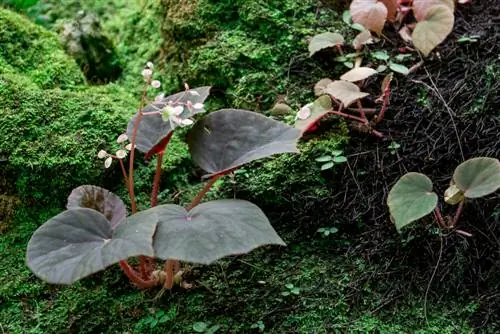
How do I prevent moss in the bed?
To prevent moss from forming in the bed, you should drain the soil, loosen it and enrich it with compost, organic fertilizer, lime, rock dust or sand. Mosses prefer moist, compacted and acidic soils, so these measures help to make the habitat unsuitable for mosses.
Lifestyle and habitat conditions of mosses
High humidity and shade are crucial factors that promote the spread of moss. The spore plants prefer to grow on acidic soil and colonize extreme locations where other plants have a difficult time. Mosses do not develop roots. The green parts of plants absorb water from the air. If the organisms dry out completely, they do not die. They go dormant when dry and survive unfavorable conditions. When water is available, they swell so that their metabolism is activated again.
Better to prevent than to fight
Mosses purify the air and protect the soil from excessive evaporation. They react sensitively to chemical pollution in the air and soil. Mosses in the bed are a sign of unpolluted soil and clean air. Therefore, it is better to take preventative measures to prevent moss from settling. Control measures destroy an important part of the ecosystem.
Prevention tips:
1. Draining the soil
A substrate that is too wet occurs when the soil is too dense or too heavy. Drainage can help.
2. Loosen up
So that waterlogging does not accumulate, loosen the soil regularly. The water drains away better and the soil dries faster on the surface.
3. Enrich the substrate
Fertilize the soil every now and then with compost or a complete organic fertilizer. Apply lime (€19.00 on Amazon) to the soil to raise the pH. Rock powder or sand improves the properties of the soil.
Alternative: Design with moss
Numerous species of moss are the ideal ground cover for locations in the shade with wet and heavily compacted soil. Use the small moss cushions from the beds and transplant them to another location. You can create an ideal substrate from leaf compost and sand, which you should press down with a lawn roller. Place the moss pads on the surface about ten centimeters apart and press lightly. Within a short time, the small cushions have developed into a floor-covering carpet.

